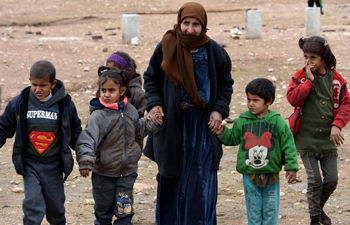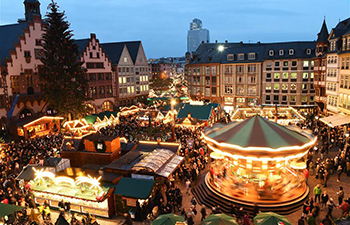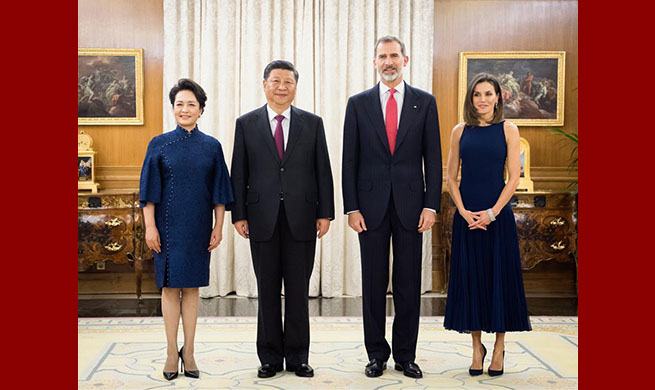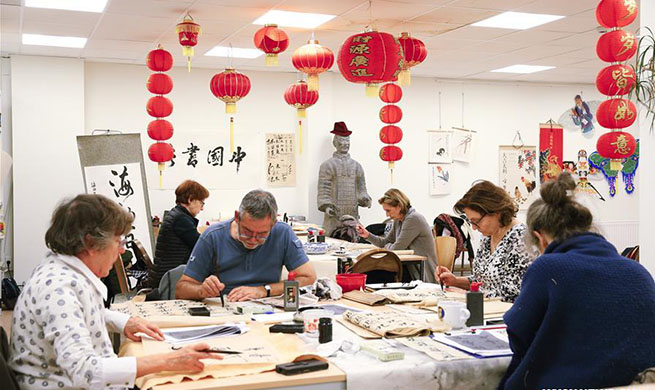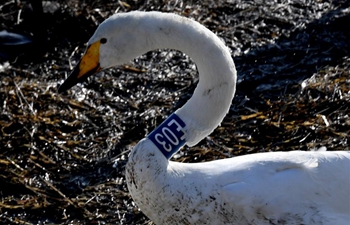LONDON, Nov. 28 (Xinhua) -- A new exhibition at the Charles Dickens Museum, launched on Wednesday, is exploring the pivotal role of food in the author's life and novels.
On the 175th anniversary of the publication of A Christmas Carol, as Charles Dickens's first family home is dressed for Christmas, the exhibition Food Glorious Food: Dinner with Dickens has been opened to investigate Dickens's relationship with food and the epic menus of dishes and drinks served by the Dickens family to their many guests.
It shows his dinner parties - full of activity, wit, comedy and people and their peculiarities - were essential food for his imagination.
Pen Vogler, the exhibition's guest co-curator and author of Dinner with Dickens: Recipes inspired by the life and work of Charles Dickens, said the exhibition also examines the deep-lying reason for Dickens's need to entertain and share food - his hidden childhood memories of hunger -- and his belief, made clear in his stories, that the rich and poor alike had the right to enjoy food and drink and that children deserved the security of proper meals.
"Food is everywhere in Dicken's stories and almost always significant," said Vogler, "Food, and the lack of it, is so central to Dickens's work."
The exhibition runs from Wednesday to April 2019 throughout the rooms in which Charles Dickens and his family lived, entertained countless friends and hosted dinner parties for some of the most influential and interesting members of Victorian society. It features household culinary items used by Dickens and draws on letters and first-hand accounts by Dickens's dinner guests to build a vivid picture of the experience of enjoying dinner with Dickens.
Charles Dickens Museum is at 48 Doughty Street, Bloomsbury, the London townhouse into which Dickens moved with his growing family in 1837. It was at this house that Dickens created Oliver Twist, a novel which revolves around hunger and the need for food, exemplifying, as much as any of his tales, the significance of food in Dickens's stories. The plight of the orphan Oliver Twist reflects the hardship of Dickens's own childhood and the poverty and hunger that saw him gazing longingly into grocery shop windows as a child and which remained a secret until after his death.
Cindy Sughrue, director of the museum, said the social point about food that Dickens made in his stories is still relevant today particularly.
"There are still a lot of people in food poverty today in Britain, who don't know where the next meal comes from. So all the things Dickens wrote about, the anxiety and the psychological problems of not being fed, is incredibly relevant today. It is really good if this exhibition does help people to reflect on it a little bit," she told Xinhua.
The Charles Dickens Museum holds the world's most comprehensive collection of Dickens-related material. When he and his wife moved to the house at Doughty Street he was a little-known writer, while by the time he left almost three years later, he was an international star having written The Pickwick Papers, Oliver Twist and Nicholas Nickleby there.



